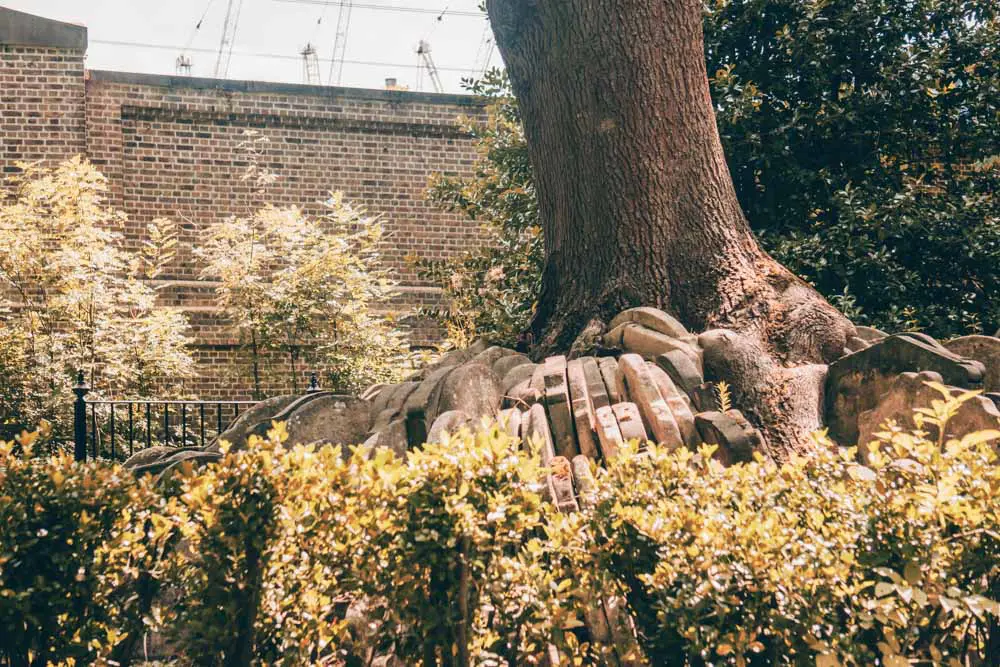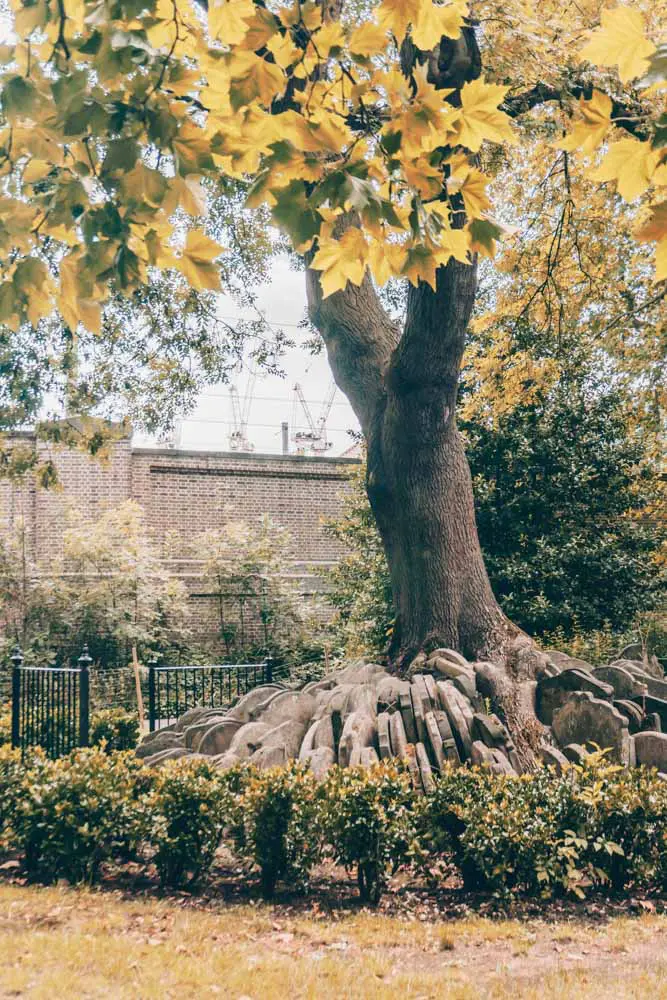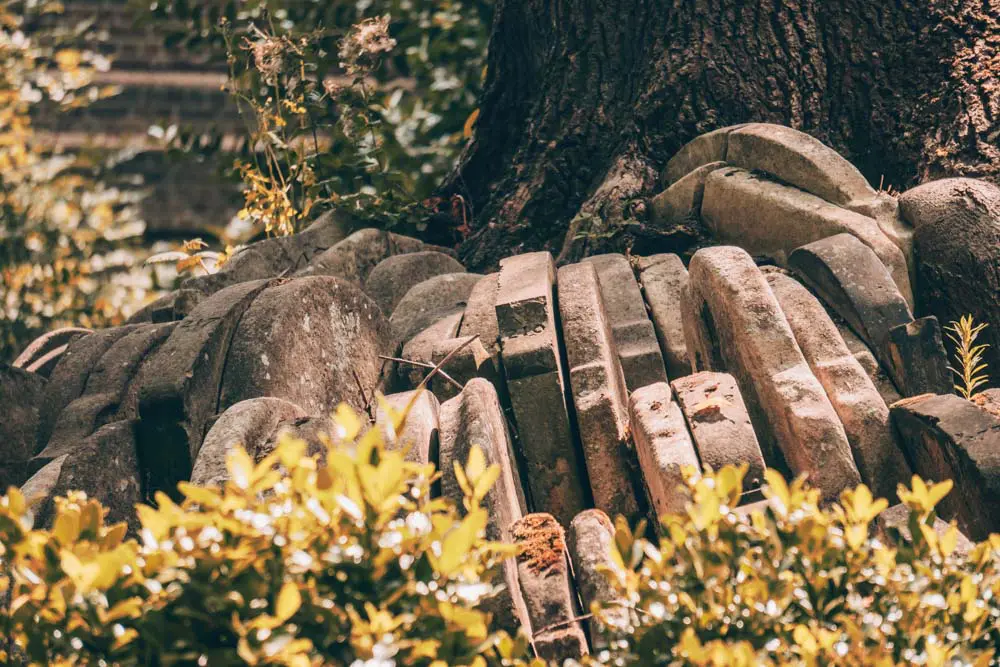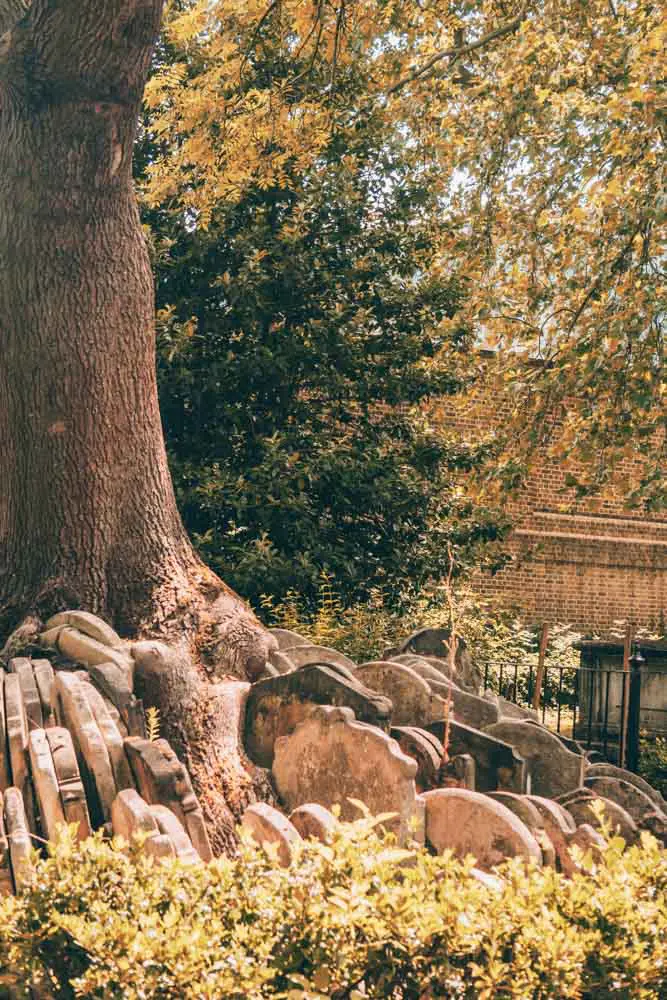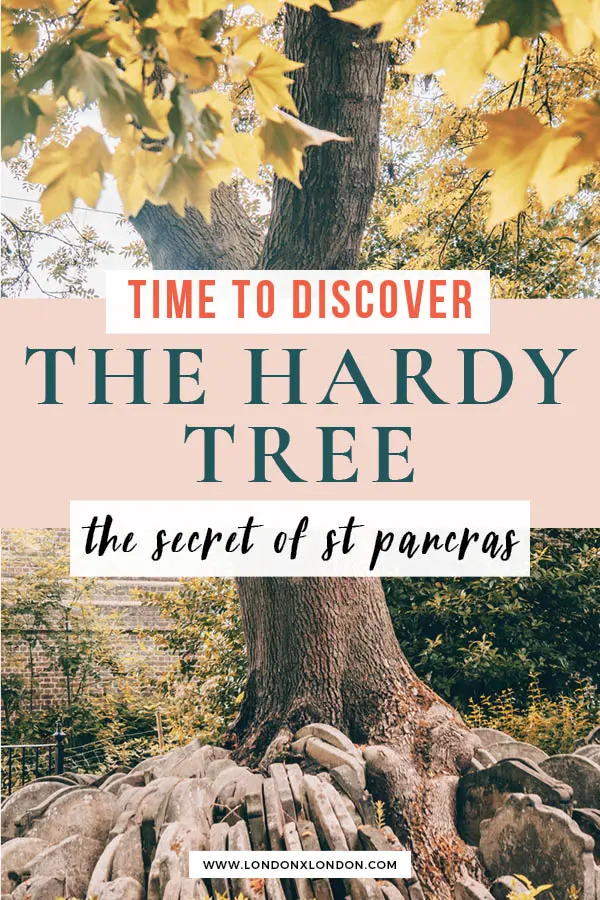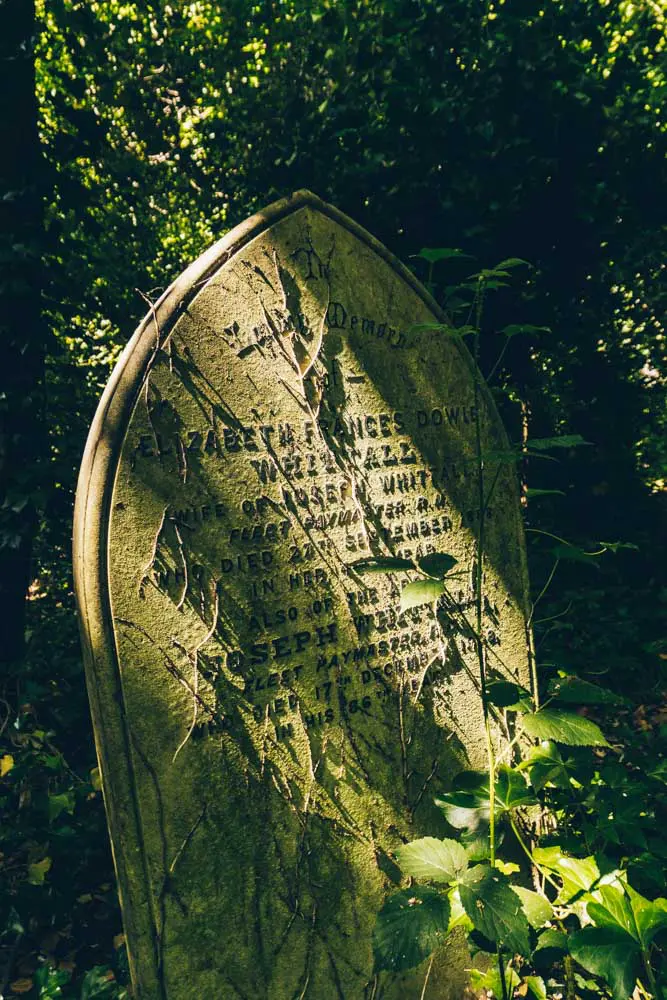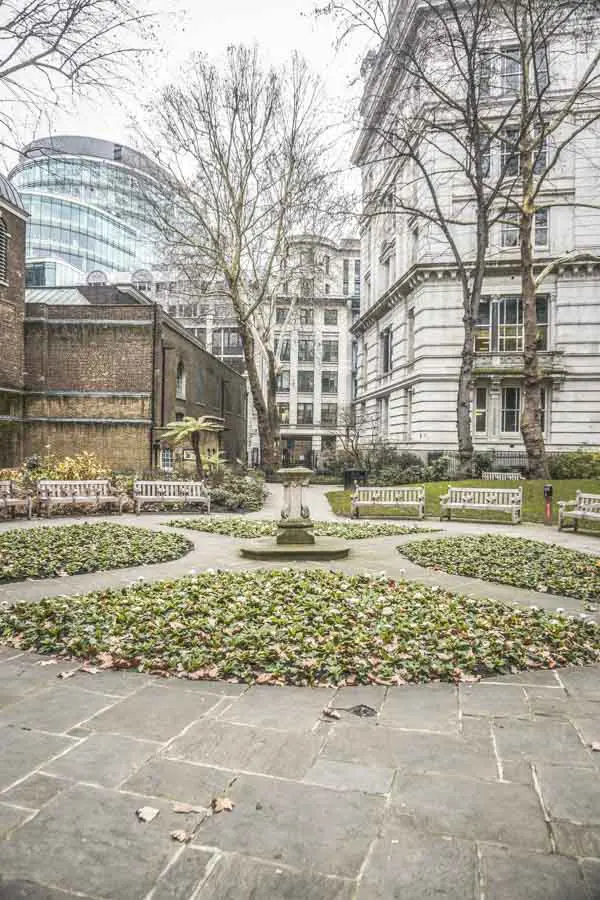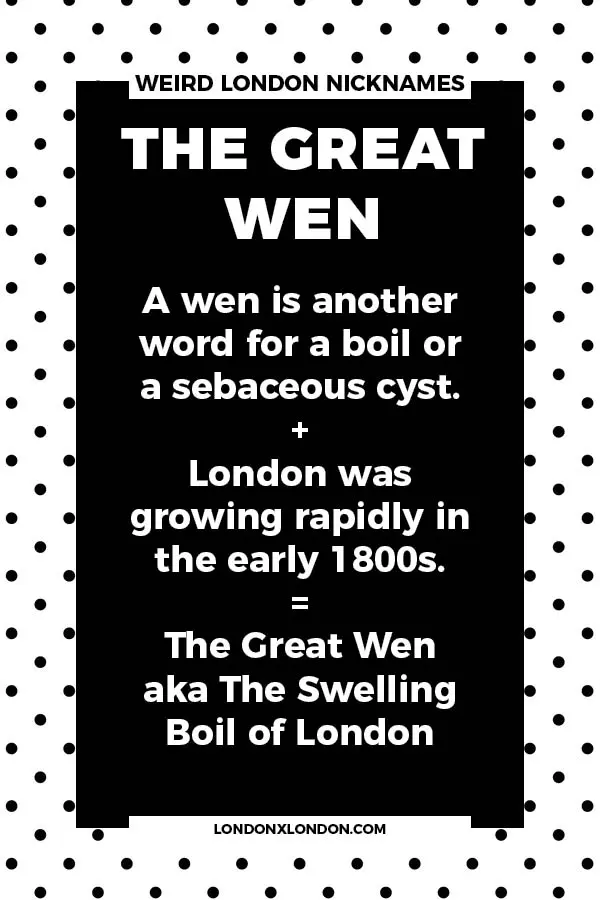The Hardy Tree is one of London’s stranger sights.
After all, it’s not every day that you come across a tree ringed by old gravestones, neatly arranged concentrically, radiating from the tree’s trunk.
Curious? I’d be surprised if you weren’t.
What’s the story behind the Hardy Tree? Why is it called the Hardy Tree? I had many, many questions when I headed up to King’s Cross last week to see this intriguing landmark (as those of you following me on Instagram will know).
Gather round my friends, we’re about to dig a little deeper into this quirky London spot.
The Hardy Tree
Weird as The Hardy Tree is, the story behind it is even weirder.
Cast yourself back to the mid 19th century when the Industrial Revolution had changed the face of Britain. The railways were digging their way through countryside and cities alike, generally razing pretty much everything that came in their way to the ground.
Scene set?
It’s no surprise that the St Pancras and King’s Cross areas were particularly affected because of the two big stations being built. The railway companies cut a scythe through the area – including through the graveyard of Old St Pancras church.
In fact, they did their job so aggressively that the public complained of the trail of decaying corpses (no joke) and disturbed coffins they left in their wake and the Bishop of London commissioned a firm of architects to clean up the mess.
Enter the famed Victorian poet and novelist Thomas Hardy, who at that point was a lowly apprenticed 25-year-old junior architect slaving away in London at … you guessed it, the firm of architects brought in to fix the graveyard.
Hardy’s boss Arthur Blomfield took one look at the job and immediately passed it over to his apprentice (really, who can blame him). As a result, Hardy was left with the distinctly unenviable task of overseeing the clear-up of the graveyard… and that’s exactly what he spent the next year doing.
It was a rather unpleasant job – rendered even more so by the fact that Hardy apparently uncovered the body of a two-headed man during the excavations (doesn’t this sound *exactly* like the stuff nightmares are made of).
It’s hard to believe there could be any upside amidst the decaying bodies, two headed corpses and general horror, but there is: The Hardy Tree.
Hardy oversaw the process in which the graves of the displaced bodies were arranged around the tree, which, in turn, has twined its roots around them in an everlasting hug.
Hardy’s Thoughts on the Experience in St Pancras Old Church Graveyard
I can’t find any reference of the experience to creating The Hardy Tree in the author’s novels, but he does talk about it in his poem The Levell’d Churchyard.
He wrote the poem many years after his St Pancras experience, both as a reflection on overseeing the moving of the graves and a critique of the levelling of the graves that had just taken place in Wimborne in Dorset where he lived at the time.
Here it is…
“O passenger, pray list and catch
The Levell’d Churchyard, Thomas Hardy
Our sighs and piteous groans,
Half stifled in this jumbled patch
Of wrenched memorial stones!
“We late-lamented, resting here,
Are mixed to human jam,
And each to each exclaims in fear,
‘I know not which I am!’
“The wicked people have annexed
The verses on the good;
A roaring drunkard sports the text
Teetotal Tommy should!
“Where we are huddled none can trace,
And if our names remain,
They pave some path or porch or place
Where we have never lain!
“There’s not a modest maiden elf
But dreads the final Trumpet,
Lest half of her should rise herself,
And half some local strumpet!
“From restorations of Thy fane
From smoothings of Thy sward
From zealous Churchmen’s pick and plane
Deliver us O Lord! Amen!”
Get the feeling that Hardy didn’t exactly have fond memories of his time in the graveyard, don’t you.
You also see the recurring theme of progress razing through and destroying tradition in his books – perhaps an echo of Hardy’s own thoughts on that unpleasant job.
St Pancras Hardy Tree: Practical Information and Map
- The Hardy Tree is in the Old St Pancras Church graveyard, a short walk from Kings Cross and St Pancras stations.
- You can also find the memorial Sir John Soane built to his wife in the same graveyard – it’s one of only two graves with listed status in London and is said to have inspired Giles Gilbert Scott’s design for the iconic K2 Telephone Boxes.
- Address: Saint Pancras Gardens, London NW1 1UL
Love This? Save and Share on Pinterest!

